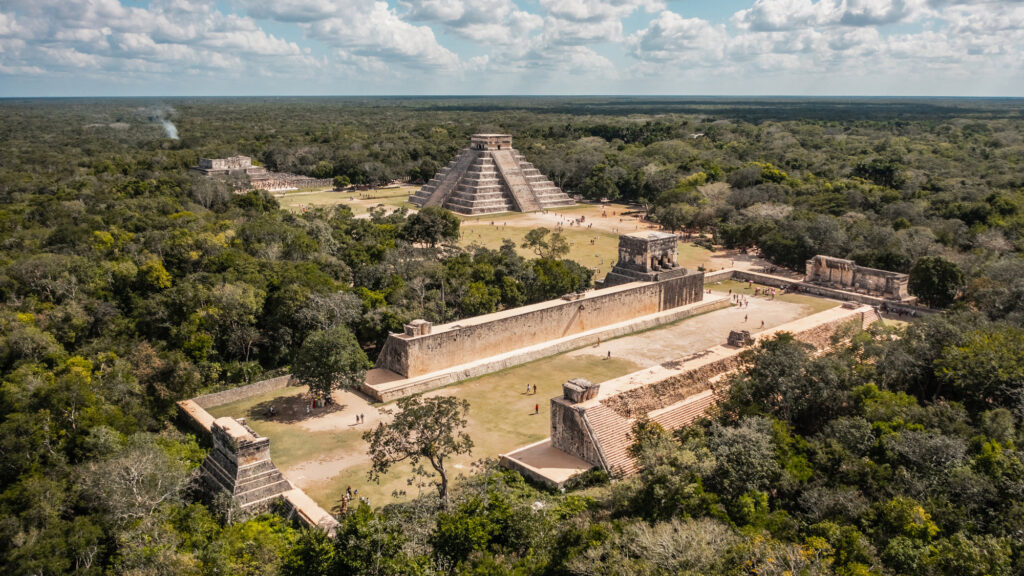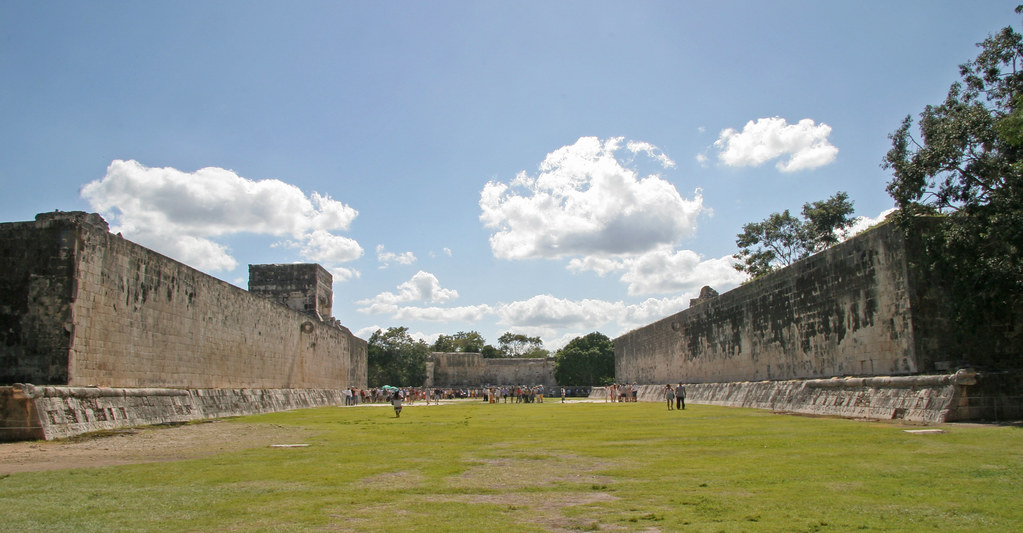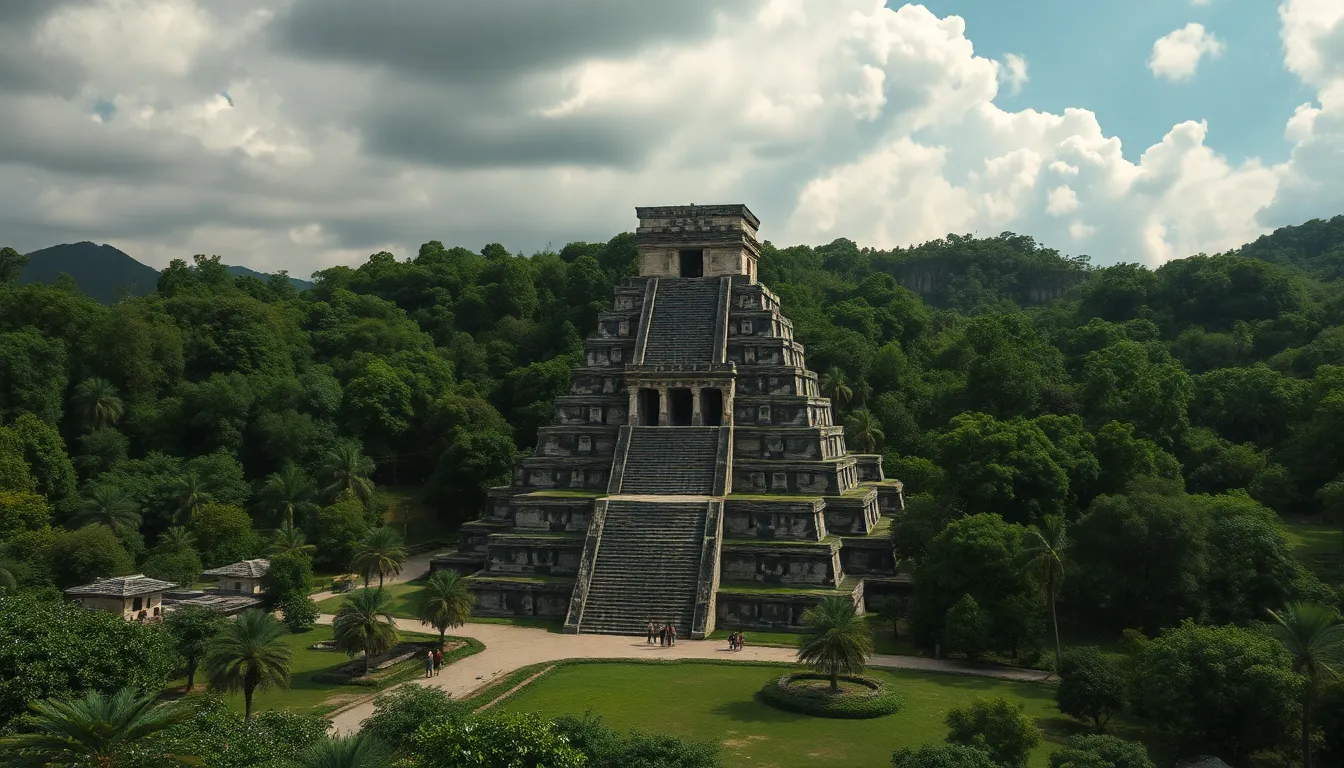Chichen Itza travel guide: Hidden deep within the Yucatán Peninsula, Chichén Itzá stands as one of the most extraordinary archaeological sites in the world. Recognized as a UNESCO World Heritage Site and one of the New Seven Wonders of the World, it attracts millions of visitors every year. They come to see its impressive temples, sacred structures, and precise astronomical designs that reveal the genius of the ancient Maya.
Whether you’re a history lover, a spiritual seeker, or simply a curious traveller, Chichén Itzá offers an unforgettable glimpse into Mayan brilliance and the mysteries of their civilization.

Location & Accessibility: Chichen Itza travel guide
📍 Region
Located in the Yucatán Peninsula of Mexico, this region is home to some of the country’s most iconic Mayan ruins, including Chichén Itzá. In fact, it’s one of the most visited archaeological sites in the world.
🏙️ Nearest Cities
The closest cities are Valladolid (about 45 minutes away), Mérida (1.5 hours), and Cancún (2.5 hours by car). Each city, therefore, offers easy access and a different travel experience, depending on where you stay.
🚗 Getting There
You can reach the site by bus tours, car rentals, or guided day trips from Cancún, Tulum, or Playa del Carmen. Moreover, the drive is smooth and scenic, taking you through small towns and lush countryside along the way.
💡 Travel Tip
Arrive early in the morning to avoid the crowds and beat the midday heat. Since the site opens at 8:00 AM, early visitors can explore in comfort and enjoy the quiet atmosphere before tour buses arrive. As a result, your experience feels more personal and relaxed.
El Castillo: The Temple of Kukulkan: Chichen Itza travel guide
The most iconic structure at Chichen Itza is El Castillo, also known as the Temple of Kukulkan — a towering step pyramid that dominates the ancient site. In fact, it’s one of the most recognisable landmarks in all of Mexico.
Built with incredible precision, the pyramid reflects advanced astronomical knowledge. Each of its four sides has 91 steps, and when you add the top platform, the total equals 365 steps — a clear reference to the solar year.
During the spring and autumn equinoxes, something extraordinary happens. As the sun sets, light and shadow combine to form the illusion of a serpent gliding down the staircase. According to legend, this represents the descent of the feathered serpent god, Kukulkan.
Why It Matters: El Castillo is more than a pyramid — it’s a cosmic calendar, a religious temple, and a political symbol woven into the story of the ancient Maya.
The Sacred Cenote: Portal to the Gods
Just a short walk from the main pyramid lies the Sacred Cenote (Cenote Sagrado), a natural sinkhole believed to be used for ritual offerings and human sacrifices.
- Archaeologists have discovered gold, jade, pottery, and even human remains at the bottom of the cenote.
- It served as a spiritual gateway, where the Maya made offerings to Chaac, the rain god, especially during times of drought.
Visitor Tip: Although you can’t swim in the Sacred Cenote, nearby cenotes like Ik Kil are open for swimming and make a wonderful post-tour stop.
The Temple of the Warriors & Group of a Thousand Columns: Chichen Itza travel guide
Another must-see site within Chichen Itza is the Temple of the Warriors, surrounded by hundreds of stone pillars known as the Group of a Thousand Columns. Each column once supported a large roof structure where Mayan warriors gathered for rituals and assemblies.
In addition, you’ll notice statues of Chac Mool — reclining figures that represent messengers to the gods. Their distinct posture and carved details make them some of the most photographed features in the temple complex.
Photography Tip: Visit during the golden hour for dramatic lighting and deep shadows that highlight the temple’s ancient beauty. As a result, your photos will capture both the mystery and grandeur of this sacred site.

The Great Ball Court: Chichen Itza travel guide
Chichen Itza features the largest and best-preserved Mesoamerican ball court, stretching over 550 feet long and lined with towering stone walls. Here, the air still carries echoes of the ancient game known as Pok-Ta-Pok.
In fact, this was far more than just a sport — it represented spiritual faith and political power. According to legend, the losing captain sometimes faced sacrifice, an act seen as a noble offering to the gods.
Moreover, the court’s design is astonishing. Try speaking near the stone walls — the acoustics bounce your voice back across the field in a fascinating way. As a result, you’ll experience the blend of science, art, and spirituality that defines this ancient wonder.

Entry Info & Tips: Chichen Itza travel guide
🕰️ Opening Hours
The site is open daily from 8:00 AM to 5:00 PM. Arrive early if you want to explore the temples before the midday heat and the crowds arrive. Early mornings also offer the best light for photography.
💵 Entry Fee (Approx.)
- Foreign visitors: MXN 614 (around USD $35)
- Mexican citizens: Reduced rate with valid ID
- Guided tours: Local guides are available at the entrance for a deeper look into the ruins.
In addition, prices may vary slightly during special events or holidays, so it’s a good idea to check in advance.
🎒 What to Bring
Pack comfortable shoes, sunscreen, a hat, water, a camera, and some cash for snacks or souvenirs. Moreover, staying hydrated is essential because the sun can be strong throughout the day. Light clothing will also help you stay cool.
⚠️ Important Note
Drones and climbing the pyramids are not allowed. These rules help protect and preserve the ancient site. By following them, you help ensure that Chichén Itzá remains beautiful for future generations to enjoy.
Best Time to Visit
☀️ Dry Season (November to April)
This is the most popular time to visit Chichén Itzá. During these months, the weather stays pleasant and sunny, making it perfect for exploring the ruins. However, because the season is so popular, crowds can be large. As a result, it’s best to plan your visit early if you prefer a quieter experience.
🌞 Equinox Dates (March 20–21 & September 22–23)
Visit during the equinox to see the famous serpent shadow phenomenon — when sunlight creates the illusion of a snake gliding down the temple stairs. It’s one of the most magical moments you can witness at Chichén Itzá. Keep in mind, though, that travellers from around the world visit during these dates. Therefore, expect big crowds and a lively atmosphere.
📸 Early Morning or Late Afternoon
For the best photos, try to arrive early in the morning or later in the afternoon. During these times, the light is soft, and the crowds are smaller. You can move at your own pace and enjoy a peaceful atmosphere.
Moreover, the cooler temperatures make sightseeing more comfortable, letting you focus on capturing the perfect shot.
Cultural and Spiritual Significance
Chichén Itzá is more than a tourist attraction — it’s a living museum of astronomy, politics, religion, and sacred geometry. In fact, every structure here reflects the genius of the ancient Maya and their deep connection to the cosmos.
As you walk through the site, you step into history. Each temple and pyramid tells a story of belief, power, and discovery. As a result, exploring Chichén Itzá feels less like a tour and more like a spiritual journey through time.
Final Thoughts: Chichen Itza travel guide
Chichén Itzá is a must-see destination for anyone travelling through Mexico. In fact, it’s one of the best places to explore ancient architecture, Mayan mythology, and astronomical wonders — all in one remarkable site. Each visit offers a rich and immersive experience, blending culture, history, and beauty under the bright Yucatán sun.
When you stand before El Castillo and watch the serpent-shaped shadow appear, the moment feels truly electric. You’ll remember it forever — not just for what you see, but for how it makes you feel. In that instant, you connect deeply with the mystery and power of the Mayan world.
